Sales promotions are limited offers used to generate quick revenue by enticing customers to make a purchase or strategically build brand awareness. While commonly used in business-to-consumer (B2C) ecommerce, retail, or restaurant businesses, business-to-business (B2B) providers can also take advantage of this marketing strategy to increase their sales. In this article, we dive into examples of creative sales promotion ideas for B2B businesses and provide key information on how to properly implement one.
1. Free Trials or Samples
Offering temporary free trials or samples for a finite time can quickly generate leads from those wanting to learn more or try your product or service before spending money. Free trials are excellent promotions for software-as-a-service (SaaS) companies. Business services such as cybersecurity consulting or legal advising, on the other hand, could run a free initial consultation.
One example is Pipedrive’s free trial, which allows users to access its full set of features for 14 days before they commit to a subscription.
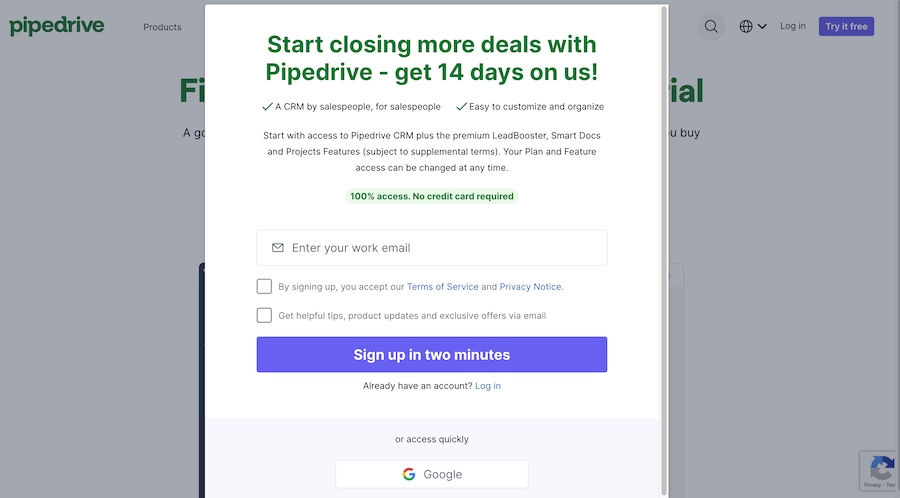
Pipedrive sign-up form for a 14-day free trial (Source: Pipedrive)
2. Risk-free Promotions
Risk-free refers to promotions where if a product or service does not meet the customer’s objectives or if they are not satisfied, they get their money back. This can be an effective promotion idea for sales consulting or marketing agency firms. Design the promotion so that during a three-month service agreement, clients get their money back if they don’t receive a certain number of leads or deals.
SmartCompliance, a certificate of insurance tracking and compliance software, offers a 30-day risk-free policy to customers who are not satisfied with the product. If the customer cancels the license within that 30-day period, they are eligible for a full refund. These promotions let customers test out your solution and encourage them to subscribe, so it’s a win-win situation.
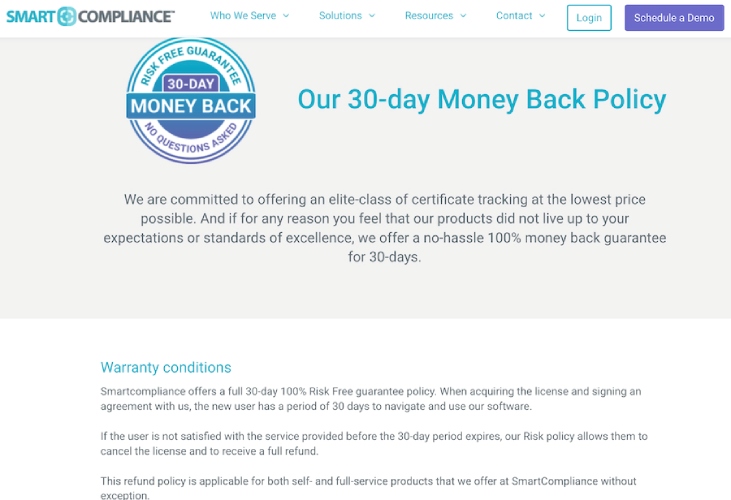
SmartCompliance 30-day money back policy (Source: SmartCompliance)
3. Subscribe & Save
The subscribe-and-save promotional sale helps increase the value of your average sale while also incentivizing longer-term relationships. Many SaaS providers like Freshsales allow customers to purchase services month-to-month but offer significant discounts if someone commits to a longer-term contract. You can also use this promo for products or services with recurring purchases, such as office supplies, regular food catering, and retainer services.
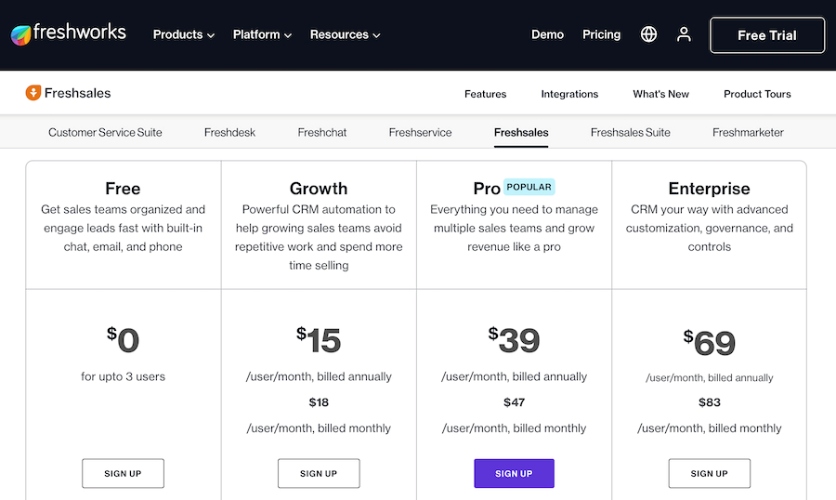
Freshsales monthly and annual billing options (Source: Freshsales)
4. Lifestyle Discounts
You may have heard about short-term promotions where veterans, the elderly, children, or active-duty military get discounts. This is one of the excellent sales promotion ideas usable in any B2B industry that permits it. By offering the discount, you can start your relationship with those customers on a positive note and hopefully keep them coming back in the long run.
If you sell a management consulting service B2B, you might provide a special discount such as a lowered down payment or reduced hourly rates. You could target special groups such as women-owned, minority-owned, veteran-owned businesses, or your own group of loyal customers. Chase Bank, for instance, offers discounted education, coaching, and banking solutions for minority-owned businesses.
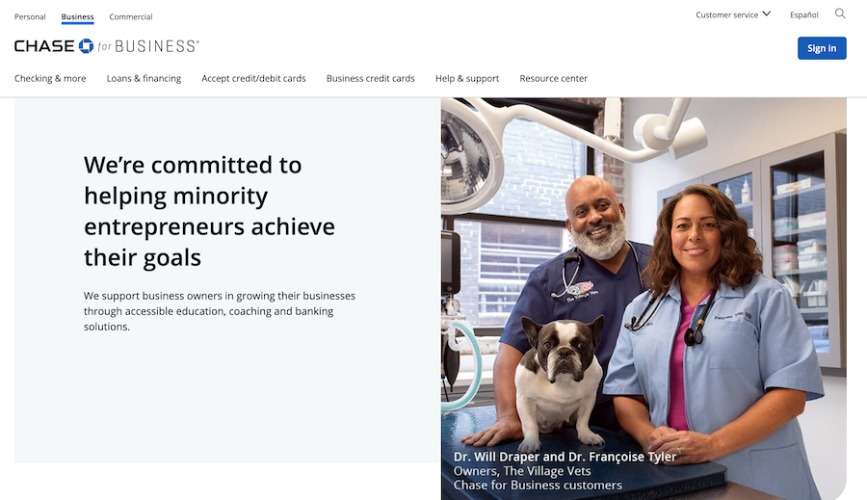
Chase Bank offers special education, coaching, and banking solutions for minority-owned businesses. (Source: Chase Bank)
5. Quality-based (Best Fit) Promotions
Similar to lifestyle-based discounts, a quality or best-fit promotional discount can also help start a paying relationship on a high note, keeping a customer for the long term. In this case, however, you’re selecting who receives the discount based on lead qualification, fit, or if they fall within a customer persona you’ve created, making them a highly qualified prospect.
This is a sales promotion idea that can benefit B2B sales as many providers in this field often have niche specialties or certain markets they focus on. If they find the perfect opportunity, they can finish the deal by giving that organization a substantial discount. For instance, crisis response software provider Blink OnlineDemand Crisis PR offered a limited-time discount with free startup consulting to 20 eligible companies that subscribed to their product.
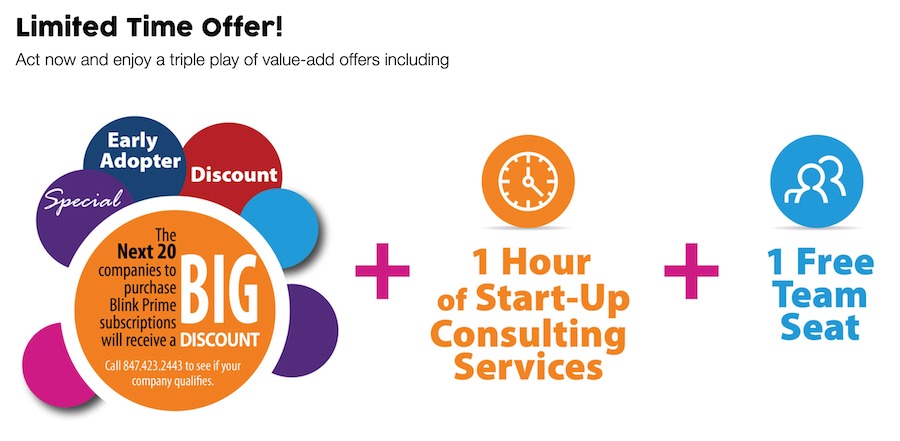
Blink OnDemand Crisis PR software’s limited discount offer for eligible businesses (Source: Blink OnDemand Crisis PR)
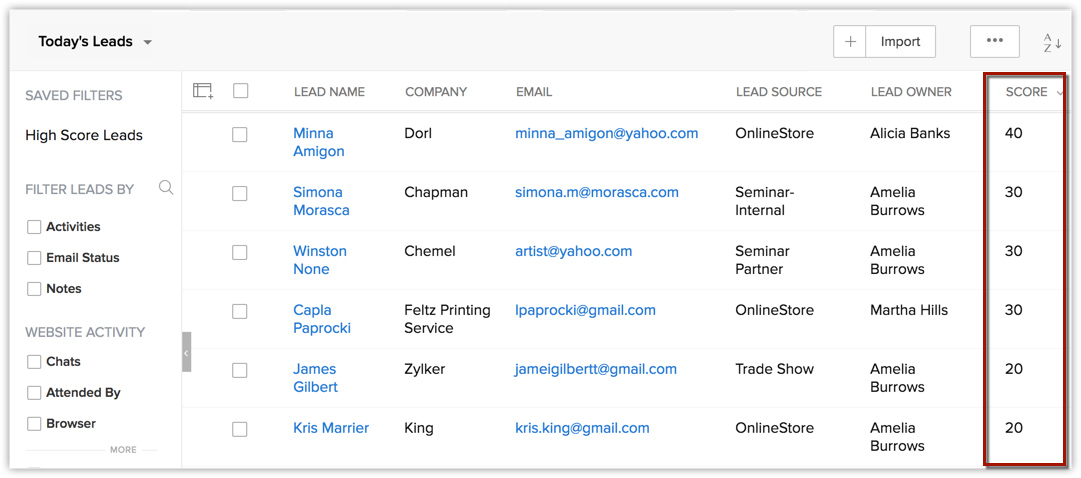
Zoho CRM lead scoring (Source: Zoho CRM)
6. Purchase for Donation Promotions
You’ve likely heard of fun sale ideas where a company will donate X amount of money to a charity for every purchase made during a certain time frame. This is one of the simplest sales promotion ideas that can trigger a purchase while providing customers with an opportunity to help others. This sales idea is an example of emotional selling, a powerful method that accelerates and drives buyer decisions.
Abacus Federal Savings Bank once ran a back-to-school promo for new customers procuring a personal credit card. For every new credit card application submitted within the promo period, the bank promised to fill a backpack with school supplies and give them to children in the local community. You can run a similar promo and use an email marketing tool like Mailchimp to automate and deploy it.
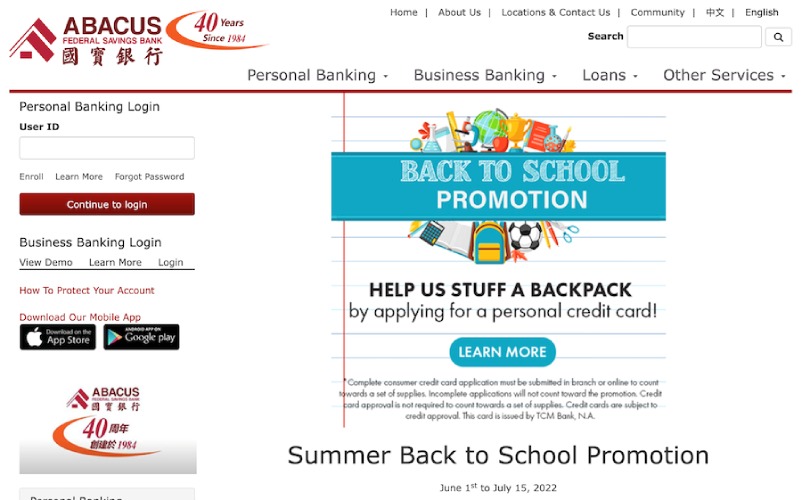
Abacus Federal Savings Bank back-to-school promo for personal credit cards (Source: Abacus Federal Savings Bank)
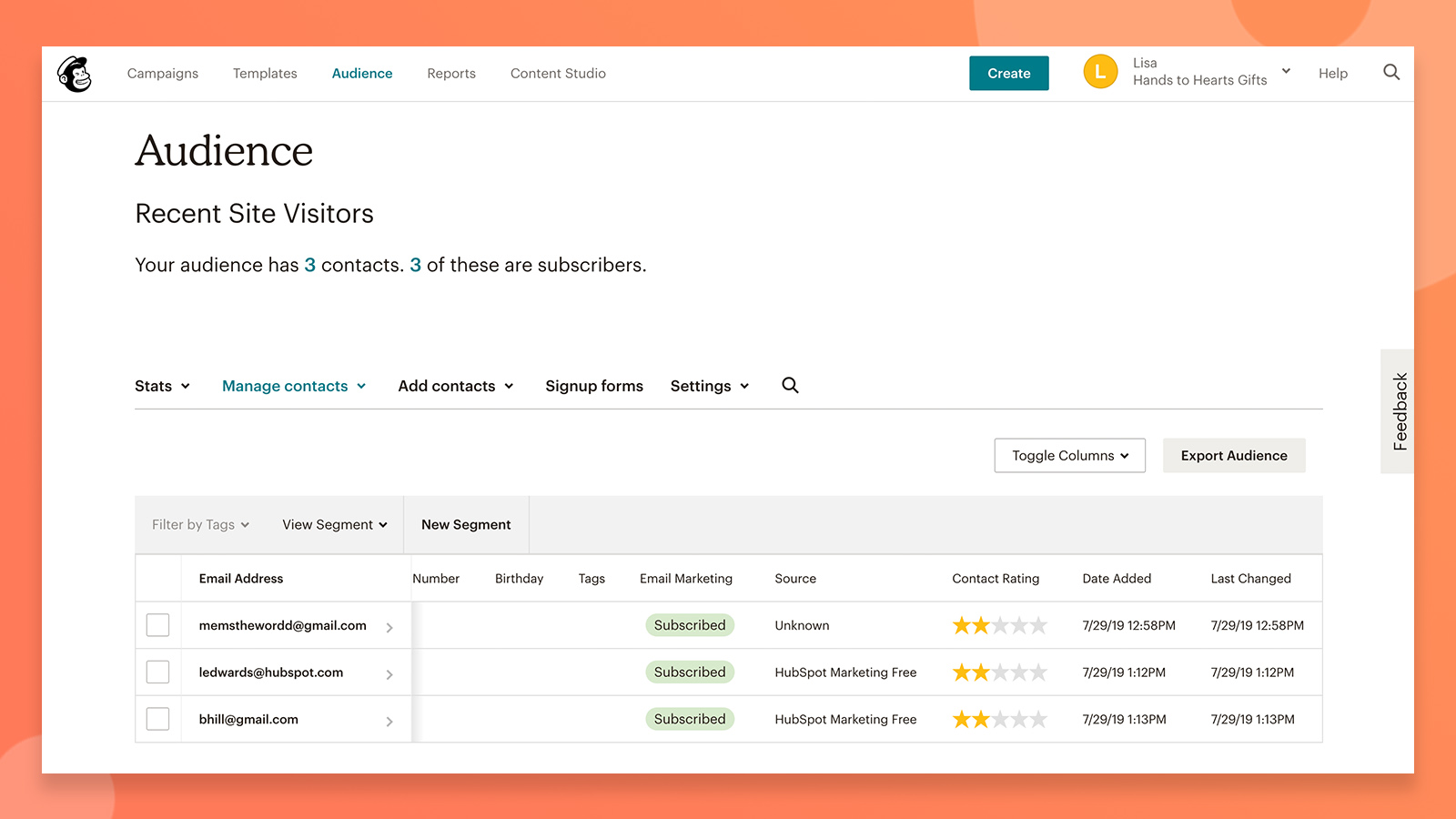
Mailchimp and HubSpot CRM contact sync (Source: HubSpot)
7. Buy One, Get One (or More) Free
The popular buy one, get one (BOGO) free campaign uses an additional free product or service to convince someone to purchase the initial one. Customers are often driven and intrigued by free offers, which makes this promotion particularly effective. However, note that these great promotional ideas only work for offerings in which having more than one is valuable.
For example, pharmacy software provider Liberty Software is offering a BOGO deal for a leadership summit it’s hosting for pharmacies. During a limited time frame, pharmacy owners can register two attendees for the price of one.
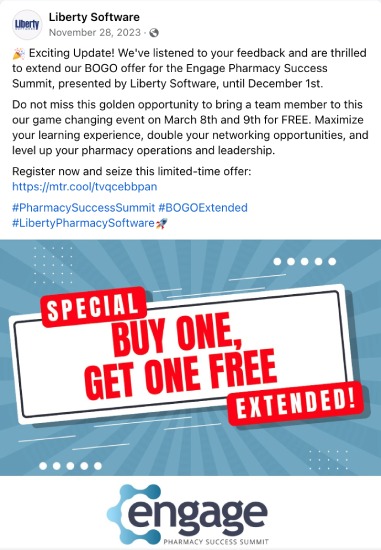
Liberty Software buy one, get one deal for a pharmacy summit (Source: Facebook)
8. Bundling Promotions
Bundling-based promotions are slightly different from the buy one, get one free deal. Instead of the same product or service, you combine complementary offerings for a discount. In the B2B space, accounting firms offer discounts for bundling tax preparation with bookkeeping services since the two go hand-in-hand. Office suppliers could also bundle computer equipment with other office supplies like paper, pens, folders, etc.
Insightly, a software provider, offers a 30% discount if you purchase the all-in-one bundle that includes its CRM, sales, marketing, and service apps. In the business-to-consumer (B2C) space, for instance, when someone buys a grill with a grill set, a discount is provided on the items. As long as the bundled grouping makes sense to purchase as one for a discount, this promotion will be effective and enticing to a buyer.
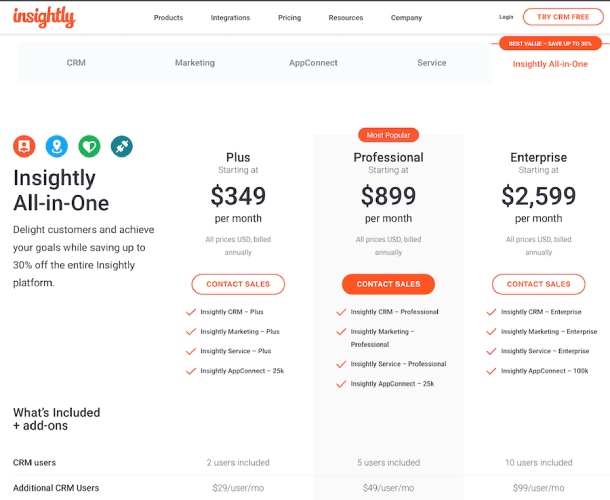
Insightly pricing for All-in-One bundle (Source: Insightly)
9. Pay-per-Referral Promotions
While not allowed in certain financial industries, such as in insurance without a proper license, referral-based promotions help build your brand through word-of-mouth advertising. It also can produce the highest-quality leads with higher conversion rates. In fact, referred customers are 18% more loyal and have a 16% higher lifetime value rate.
Most pay-per-referral promotions reward customers whose referrals lead to closed deals with cash or gift cards. However, some referral programs provide discounts to referred customers as well. When communicating this business-to-business promotion, try targeting complementary businesses or solid centers-of-influence firms to maximize referral volume. Our article on referral lead generation sources will help you determine who those influences are.
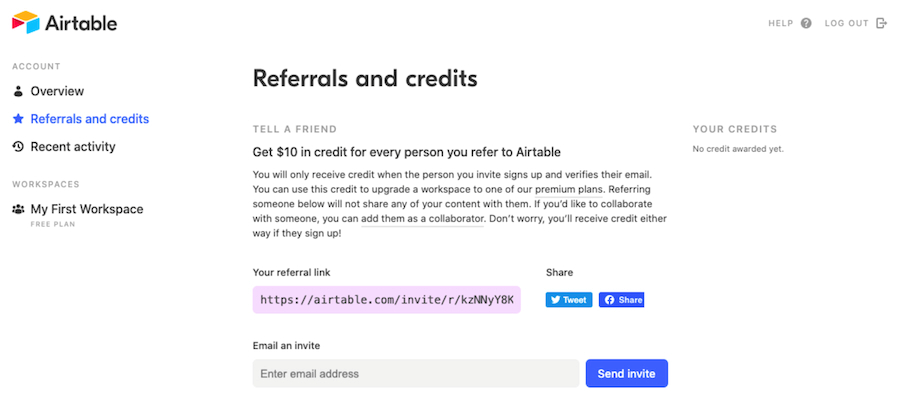
Airtable reward credit for every referral (Source: GrowSurf)
Salesforce referral tracking feature (Source: Salesforce)
10. Social Media Giveaways
This sales campaign involves giving away a reward or prize in exchange for your audience’s participation in an activity or contest. You could invite participants to follow your page and share a social media post or ask them to tag several friends in the comment section and share an opinion to be eligible for the prize. This is an effective way for B2B companies to generate leads, sales, increase brand awareness, and improve engagement with prospects and customers.
One example is an Instagram post below by digital product developer TheCodeWork. The company invited its audience to like their post, follow their page, post a boring comment, and tag a friend in the comment section. The winning participant would receive a Swiggy card they could use when ordering food via the Swiggy app. This card also allows them to receive cashback for their ecommerce purchases.
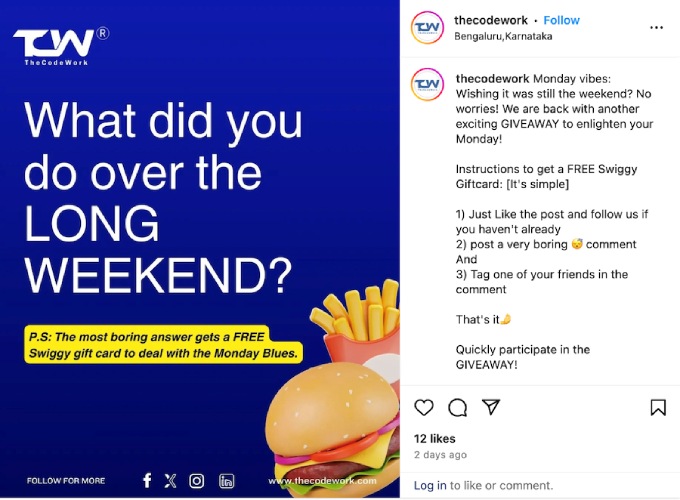
Digital product development provider TheCodeWork’s social media giveaway (Source: Instagram)
11. Joint Promotions
Joint promotions use deals, discounts, or special events in conjunction with another business. The idea is that if two companies are both advertising a conjoined campaign, it will reach the customer and prospect base of both businesses and produce better results. You commonly see this in B2B organizations where brand strategists, photographers, and videographers run a promotion that bundles all of these services into a package for a significant discount.
You could bundle products or services with another brand or offer discounts, free trials, or special offers through another company. For example, SugarCRM addressed its sales and marketing feature gaps by integrating with Triblio’s account-based marketing (ABM) platform. It also started using intent data platform Bombora’s technology for account prioritization and next-best actions. This collaboration allowed all three platforms to reach each other’s customer bases and grow their revenue.
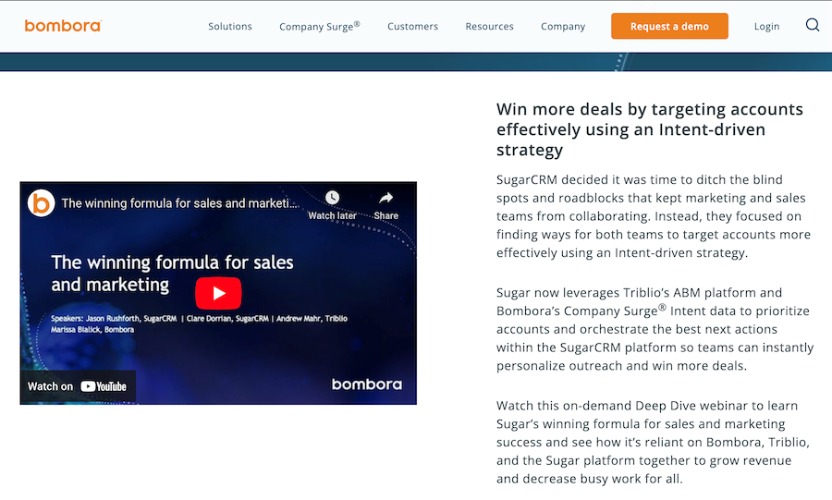
Bombora’s joint promo with SugarCRM and Triblio (Source: Bombora)
How to Implement Sales Promotion Ideas
Implementing a sales promotion campaign is an aspect of sales management that focuses on both the messaging of the promo and the actual value offered to customers. While you want to ensure the promotional deal is worth the time of your leads and prospects, it’ll only be successful if marketed properly and by following up with them afterward to build the relationship further. Here’s how to construct and implement B2B promotion ideas in four easy steps:
Decide which sales promotion idea you want to run based on your objectives. Each of the sales ideas for small business that we presented serves different promotional purposes and should be used to help you narrow in on a campaign. Once you know the type, figure out the details, such as discount percentage, the length of the promotion, who you’ll target and how, and the goals of the promotion.
When setting promotional goals, use quantitative metrics such as “To obtain 12 new free trial users” or “generate seven referrals” throughout the campaign. When deciding the actual value offer, make sure it’s financially feasible for your business. For example, offering an 80% discount on something with slim margins would be a bad idea, as you’d lose money in the process.
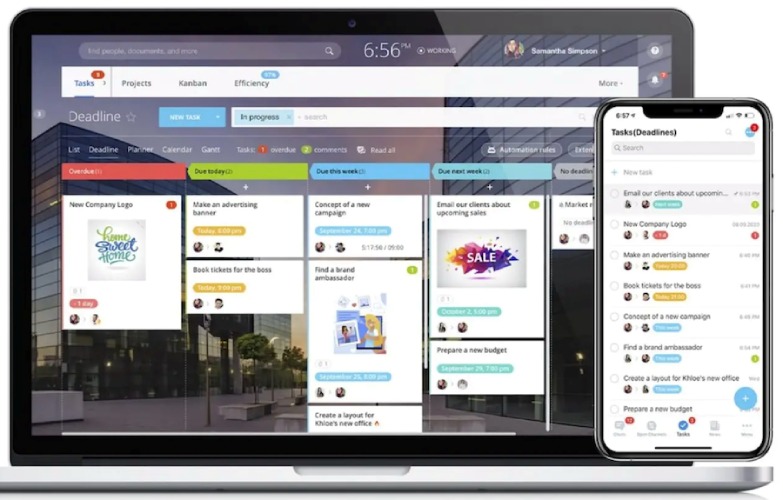
Bitrix24 project and task management module (Source: Bitrix24)
As part of any marketing or sales operations, ensure the framework, processes, and resources are in place to run your promotion. Some common examples of resources you should consider organizing include:
- Extra inventory: If you’re offering free samples or discounted or bundled products, you may need to stock up on extra inventory to meet the demand.
- Open schedule time: For free trials or consultations, be sure to free up time on your schedule for prospects to obtain product support or participate in their consultation.
- Promotion management software: If you’re running a promotion online, make sure you have software that will automate and execute the promotion.
- Marketing resources: You’ll need content development tools and personnel to help create messaging and materials you’ll use to market your promotion.
- Additional personnel: Certain promotions may require additional personnel support to handle demand and the influx of inquiries.
- Information from joint promoter: For joint promotions, gather information and materials from the partner for their role in the campaign as well as the scope of what they are offering.
Some of the best promotion ideas may require significant sales and marketing alignment in terms of resources, goals, and implementation. Make sure both functions collaborate so there’s a shared understanding of the promotion’s scope and how it will be communicated to your audiences.
Next, start marketing your sales promotion. Most communication can occur using digital marketing channels like social media, mass email, online ads, SMS texting, or banners on your website. However, for certain programs such as pay-per-referral, free trial/consultations, risk-free, or quality-based promotions, you can use your sales team for advertising and even running a sales contest.
You can also encourage the sales team to produce the most desired results through cold calling, in-person events, or direct email marketing activities. Whoever gets the most or meets a specified threshold wins a prize, which could be cash, gift card, or additional paid time off (PTO). Regardless of the channel used, there are a minimum set of questions you need to answer relating to business-to-business (B2B) marketing promotions effectively:
- What does the promotion entail and how does it offer value to the customer?
- How does someone participate in the promotion/get access to the deal?
- How long will the promotion run for?
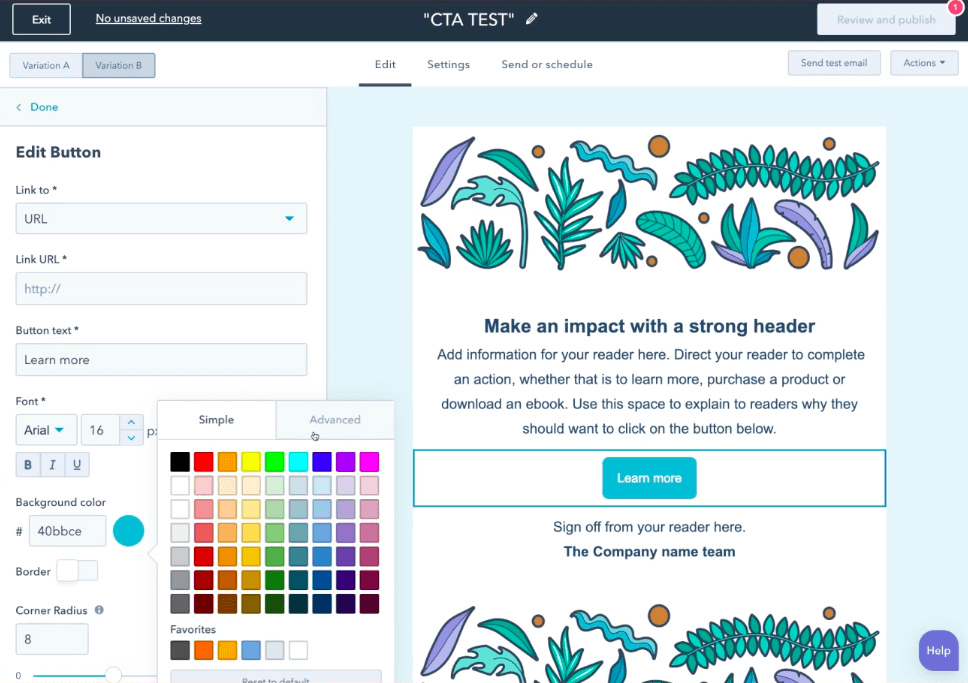
HubSpot CRM email designer (Source: HubSpot)
As participants pour in, ensure they receive the offer you promised, such as the free consultation, free trial, discounted product, or bundled service package. Sales leaders should also set a clear process to have sales reps follow up with promotional participants after it has been completed.
For instance, after a free trial or consultation has been provided, a rep can reach out via phone or email to see if they were happy with what was provided to them and if they are interested in learning more about your offerings. A sales promotion should be used as a starting point to develop long-term and meaningful customer relationships. Without staying in contact afterward, you minimize the potential customer lifetime value (CLTV) that could be obtained.
5 Statistics About Sales Promotions
Want to know the true story around sales promotions? These stats paint a tangible picture regarding its effectiveness, which methods work better than others, and how well customers engaged with various strategies.
[new graphic]
- 57% of shoppers prefer digital over paper coupons: B2B companies can launch digital coupons that target customers can use on ecommerce sites and mobile apps. If you have physical stores, you can cater to the remaining 45% of shoppers who prefer paper coupons.
- 73% of online shoppers are willing to subscribe to email newsletters in exchange for a 20% discount: Leverage this data by continuing to invite prospects to sign up for your email newsletters while dangling a percentage discount as incentive. This is a great way to increase prospect engagement and reach new leads.
- Social media is the most popular digital marketing channel for B2B and B2C marketers worldwide: Take advantage of the popularity of social media by promoting your business on various social channels like Instagram, Facebook, and TikTok. If you still don’t have a social media account, now would be a good time to create one.
- 86% of customers will try a new provider if given a coupon: Don’t be afraid to target new audiences with your sales promotions. There’s a strong chance that they will try your product or service if they can buy it at a discounted price.
- Percent-off and free shipping are the most widely used promos among consumers: Continue to offer limited-time discounts and free shipping coupons to your customers, given that these two are the most popular promos. However, it is also a good idea to try other forms of promotions—such as loyalty rewards and buy-one-get-one—in order to appeal to other customer groups.
Frequently Asked Questions (FAQs)
The primary purpose of sales promotion is to boost revenue and demand using a temporary campaign. The other purposes of marketing promo ideas include expanding the customer base, introducing a new product or service, and selling out overstocked products.
There are three main types of sales promos: dealer, sales force, and customer promotions. Dealer or trade sales promotions target distributors and dealers with the goal of increasing their interest and purchase volume. Sales force promotions are directed at the sales staff and involve contests and incentives to encourage them to close more deals. Customer promotions are designed to induce target consumers to make an impulse purchase.
To determine whether your promotion is successful, you have to accurately measure your profit, sales volume, customer satisfaction rate, and achievement of your campaign goals. Analyze the results of your promos and use them as the basis for similar campaigns in the future.
Bottom Line
Sales promotions are an excellent way to quickly increase sales, generate leads, and build your brand image. While each campaign type varies, it’s important to include the promotion scope, timeline, and target audience when creating your sales plan. Once your campaigns are completed, be sure to follow up and try to move the needle on extending your existing customer relationships further for long-term value.